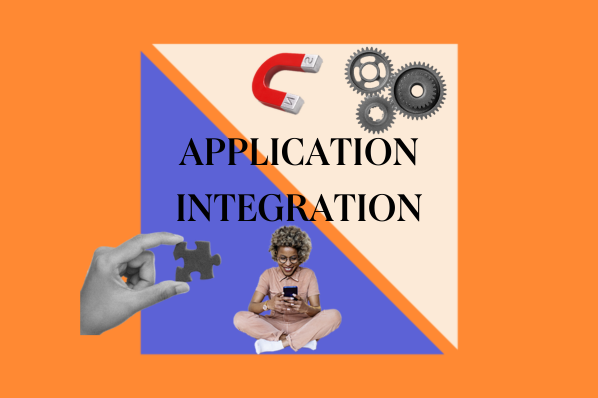Table of Contents
- What is B2B integration?
- What are the key capabilities of B2B integration?
- Types of Integration Testing
- B2B Integration Examples
- B2B Integration Tools
What is B2B Integration?
As you may have gathered, B2B integration stands for business-to-business integration. It is essentially the automated processing and communication between two or more businesses using electronic data transfers. This has many benefits, including reducing user errors, streamlining operations, and improving efficiency in various situations.
The result of a successful B2B integration means less to worry about and less time to spend on potentially redundant, error-prone tasks. It also opens the door to integrating large applications into your business.
What are the key capabilities of B2B integration?
There are many use cases for B2B integrations. The process depends on what kind of business or service you’re dealing with. They are capable of many things, including but not limited to:
- Integrating data from databases.
- Integrating systems with software applications.
- Improving data visibility.
- Improving reporting capabilities.
- Converting data from applications or documents into various standardized formats.
- And data validation.
![]()
Message Tracking and Reporting
Imagine you have to keep track of revenue, hours, or even customer relations in a spreadsheet. Wouldn’t that be a pain? Well, B2B integrations can make that a thing of the past.
For example, a sales team at Studio Proper used spreadsheets to manage their deals, resulting in a lot of time going back and forth via email. As you know, coordinating with people using email can have less than desirable results. People can ghost you, and communication with limited visibility can result in disorganization.
However, once they implemented HubSpot's CRM and sales software technologies, they cut down on the back-and-forth emails and close deals faster. This freed up time for more selling, which meant more money.
Translating and Validating Data
Say you have two companies. One uses Zendesk to track their tickets/issues, and the other uses LiveChat. These software do the same thing, but the way they work and their format differ. If you wanted to collaborate without an integration, it would likely require manually transferring data, which is prone to errors.
What if you got the same ticket in each interface or could transfer tickets seamlessly? Wouldn’t that be nice? Well, using a B2B integration could do exactly that, and it’s not limited to just issue trackers, either. Pretty much any situation when information has to be copied and pasted could be automated and standardized. SQL to Excel, Jira to Azure DevOps, and more combinations are all fair game, and communication between applications can be bi-directional. You can even go from paper-based transactions to digital ones.
Alongside transferring data between differing applications, it can validate said data by removing the possibility of human error from the equation. No more manual copying and pasting means no more room for mistakes.
Visualizing and Mapping Software
B2B Integrations can also turn the abstract into something tangible, such as enabling data visualization or showing the relationship between documents or programs.
For example, if you wanted to take information from your database and enter it into Tableau, it would likely take some work without any automation. Plus, there’s the risk of human error again.
Encryption and Compression
Files can both be encrypted and compressed with an integration. This can increase your security, reduce your storage needs, and even enable large files to be sent faster than before. A variety of different cryptographic and compression algorithms exist, and integrations can help you support the latest and greatest ones if they aren’t natively in your business already.
Communications Adapters
In the spirit of security, it’s also worth mentioning that communication adapters are a possibility. This means you can use various internet communication protocols, such as HTTPS, SFTP, and others.
Some methods are considered more secure than others, so there are times when you might consider using a different communication protocol depending on the context your service is in.
Application Integration
Application integration between businesses that work with different data types can be used to streamline things yet again.
For example, a CRM platform can be integrated with an ecommerce service or a web analytics application. It can be as simple as preventing duplicate data or as complex as managing a supply chain. The possibilities really are endless when considering this aspect of B2B integrations.
Types of Integration Testing
Broadly, there are two categories of integration testing. There is the hilariously named “Big Bang” integration testing, as well as incremental integration testing. Incremental integration testing has several different approaches, which you will examine shortly.

Big Bang Integration Testing
Many programs are modular, meaning they are independent and movable. There are plenty of platforms that combine multiple modules into one system. Well, Big Bang integration testing is generally performed after all of the modules have been developed. Afterwards, the modules are then coupled together and then tested.
This is usually best for smaller systems, and there is a downside of having to wait until every module is developed before beginning the testing.
Potentially, this could allow for a less-than-optimal scenario where resources are sitting around both untested and doing nothing while waiting for the development of the other modules. It can also make it hard to isolate issues with the modules and take a lot of time since all test cases have to be done at the same time.
The upsides, however, are that it tests the entire system at once, the modules are all completed by the time testing starts, and it also requires little to no planning beforehand.
Incremental Integration Testing
Essentially, the opposite of Big Bang integration testing, incremental integration testing is done by adding modules one by one, testing them as you go. This can enable squashing bugs in the early stages of development, independently fixing each module without having to refer to others.
As mentioned earlier, there are multiple approaches to this. If you’ve ever taken a computer science or software development course, these approaches might sound familiar.
Bottom-Up Integration Testing
As the name implies, testing with this approach involves starting at the bottom of the control flow and working your way up the chain. This enables testing lower modules before their calling modules are even developed.
A driver, a temporary module used to interact with the tested module, is used here. Think of it as simulating what will happen when another module interacts with the tested module and reporting the results. This approach is often successful and efficient.
Top-Down Integration Testing
Instead of starting at the bottom, you could start at the top and work your way down. This often uses something called “Stubs,” a sort of dummy code used in place of the missing modules below the testing module. This enables you to test various responses from the future module below and see how the current testing module behaves.
One advantage of this approach is that stubs are usually easier to write than drivers, sometimes making it more favorable than bottom-up testing.
Sandwich Integration Testing
As you may have guessed, sandwich integration testing combines the two previous methodologies, using both stubs and drivers. The top modules get tested with lower modules, working your way towards the middle module.
B2B Integration Examples
Integration With Social Media
Say you’re integrating your application with something like LinkedIn. There may be a login page as well as a homepage. If the user enters valid login information, they should go to the homepage. The communication between those two interfaces should be verified to make this expected behavior a reality.
For further example, you can repeat this process with the connection between the homepage and profile page, then the notifications page and a post it's connected to, and so on.
Pro tip: This example can be extrapolated for use with any social media platform and can either be automated or manual.
Supplier-Receiver Integration
Pretend there is a manufacturer that wants to source some materials. Their integration for contacting and working with suppliers could look something like this:
- Contact suppliers to get information on pricing and availability of materials.
- Put information such as the quotes from suppliers into their resource planning system.
- Use that information to choose a supplier.
- Send a purchase order to the chosen supplier.
- Supplier confirms purchase order.
- Receive a receipt from the supplier to store in their system.
Having software that allows the supplier and manufacturer to communicate seamlessly and track all the data would be key to their success.
Pro tip: This example will also use data validation and translation, as there is no default way to interpret the various files you will encounter when contacting various suppliers.
Cloud Integration
Another example of B2B integration is cloud integration, which means connecting data and applications in the cloud to your infrastructure or even other cloud services. This can prevent data from becoming lost, overlooked, or siloed (when data is isolated and not available to the entire organization).
Cloud integrations can allow for a large range of useful information and reporting. Things like resource usage, errors, security breaches, network traffic, and user behavior are all possible to analyze depending on the cloud integration.
This can result in reduced business costs, a high-level understanding of large amounts of data, continuous delivery, and increased platform scalability.

If this sounds complex, you could use an integration-platform-as-a-service solution (iPaas) instead of worrying about selecting the right tools from an overwhelming sea of options. It can also prevent the need for manually developing your own software for cloud integration.
What we like: Shifting workflows into the cloud can enable real-time digital data transfer, cutting down on delivery times.
B2B Integration Tools
There are various B2B integration tools available for use, and the one you pick will depend on your company size, budget, and the types of services you need. Let's explore some available options below.
IBM Sterling B2B Integrator

The IBM Sterling B2B Integrator is designed to help businesses efficiently exchange structured documents. The software allows users to transform data between different formats. This facilitates seamless communication with trading partners using different standards.
Pros: Users of this service say that it’s an excellent tool for electronic data interchange (EDI). The platform also supports a wide variety of translations between data formats.
Cons: Despite having a large number of communication and mapping capabilities, setting up the platform can be a complex process.
Pricing: Plans start at $310 per 1K kilo characters a month. Contact IBM for more pricing information.
What we like: There is a 30-day free trial. This includes more than just the “Essentials Edition,” which is the edition obtained with the starting price. They also have an overview video of their B2B integration service.
Microsoft BizTalk Server

Microsoft BizTalk Server is an integration automation platform that enables organizations to connect disparate systems across companies. It provides a comprehensive set of tools to develop, deploy, and manage integration solutions.
The platform offers real-time monitoring and reporting capabilities. This can help your team track and measure key performance indicators.
Pros: Users say that BizTalk is a reliable, stable platform that has high scalability. If you need an adapter, it’s straightforward to create one.
Cons: Deployment can be complex, and upgrades can be difficult once integrations are running.
Pricing: A “pay as you go” service is offered, with their cheapest virtual machines starting at $1,543.22 monthly.
What we like: There are a wide variety of virtual machines to choose from, ranging from a basic single-core CPU to highly specialized machines.
SAP Business Technology Platform

SAP Business Technology Platform enables teams to integrate enterprise applications and services. This includes capabilities such as UI development, backend services, integration scenarios, data modeling, and analytics.
SAP Business Technology Platform allows businesses to deploy mobile apps and leverage IoT capabilities. It provides tools to securely manage devices, collect and process IoT data, and enable connectivity with edge devices.
Pros: Users report that this service is easily customizable and implemented quickly without much prior knowledge. It also has built-in capabilities for encryption, authentication, and monitoring.
Cons: Error handling can be complex. While easily customizable, setup can take a lot of configuration to get things flowing. It also can be difficult to find resources or support depending on where you are and what you’re developing.
Pricing: Free plans are available. Additional pricing information is available upon request.
What we like: The free services can be a great way to test-run things, and they have a cost estimator for their paid services. There are also volume-based discounts for their CPEA plan.
Getting Started
In short, B2B integrations involve the automation and streamlining of business processes. Their key capabilities are diverse and can allow you to cut down on inefficiencies in your business, reducing the possibility of human error. They also allow you to better understand what’s happening inside your ecosystem.
Consider which integration testing will work best for your integrations and if a B2B integration tool is the right fit. If you’re interested, I encourage you to get out there and explore your options until you find one that suits your needs.
Integrations












